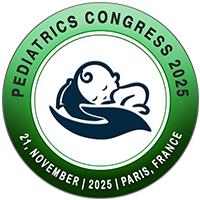
Santhosh kumar Malebennur
Department of pediatrics, IndiaPresentation Title:
Cross-sectional genotypic study of thalassemia children enrolled in thalassemia clinic in a tertiary care hospital, Mysuru
Abstract
Background: Thalassemia is a genetic disorder affecting hemoglobin production, with a high prevalence in India. Approximately 240 million people worldwide are carriers of β-thalassemia, with 30-40 million carriers in India. Objectives: To identify the different types of genetic mutations present in children with thalassemia and to correlate genotype with phenotype. Methods: A cross-sectional descriptive study was conducted among 50 patients enrolled in the thalassemia clinic at a tertiary care hospital in Mysuru. A blood sample was collected from all the children enrolled in thalassemia clinic of JSS Hospital, Mysuru coming for routine blood transfusion. The sample was sent to the laboratory for genetic analysis. Results: The majority of patients were older children and adolescents, with 48% being over 10 years old. The IVS-I-5 (G>C) mutation was the most common, found in 54% of patients. The most common variant, C.92+5G>C, found in 72% of the patients, suggests a significant concentration of this mutation in the studied population. Other variants, like C.47G>A (12%) and C*110T>C (6%), are less frequent, indicating that while the C.92+5G>C mutation is predominant, there is still notable genetic heterogeneity The most prevalent genotype was B+/B+, found in 62% of patients. Conclusion: In conclusion, this study reveals a significant concentration of the IVS-I-5 (G>C) mutation and the C.92+5G>C variant among the studied population, highlighting the importance of genetic testing in diagnosis and treatment planning. The correlation between genotype and phenotype was also established, with the B+/B+ genotype being the most prevalent and associated with a less severe form of thalassemia. The study underscores the significance of genetic inheritance patterns in the manifestation of the condition and emphasizes the need for personalized treatment strategies based on individual genetic profiles.
Keywords: Thalassemia; Genetic mutations; Genotype; Phenotype; India
Biography
TO BE UPDATED SOON

